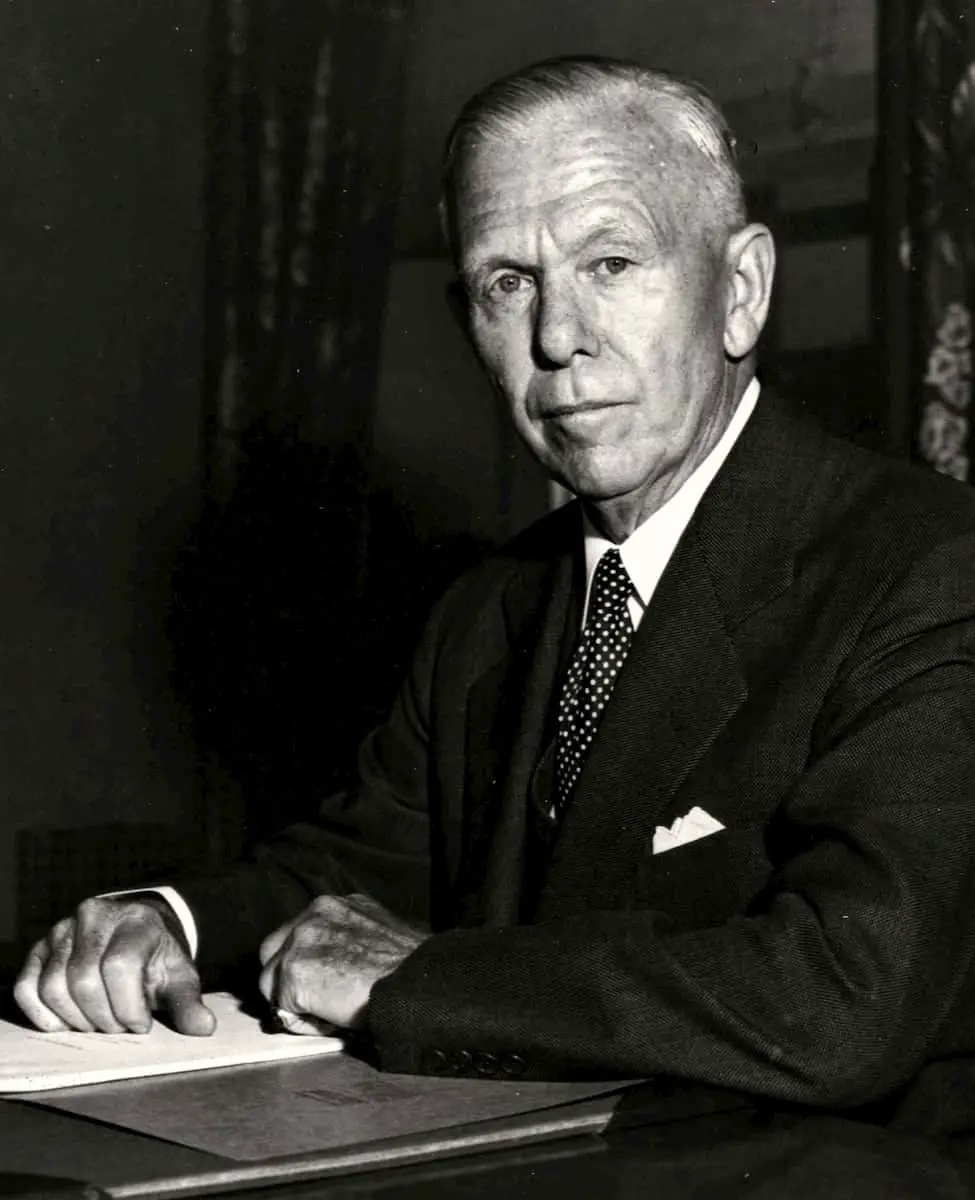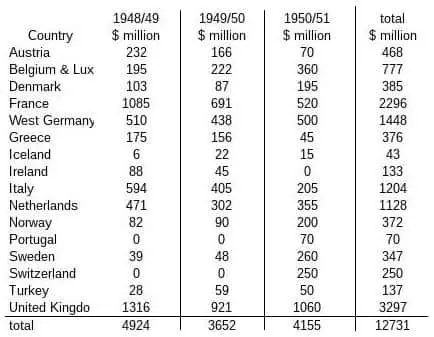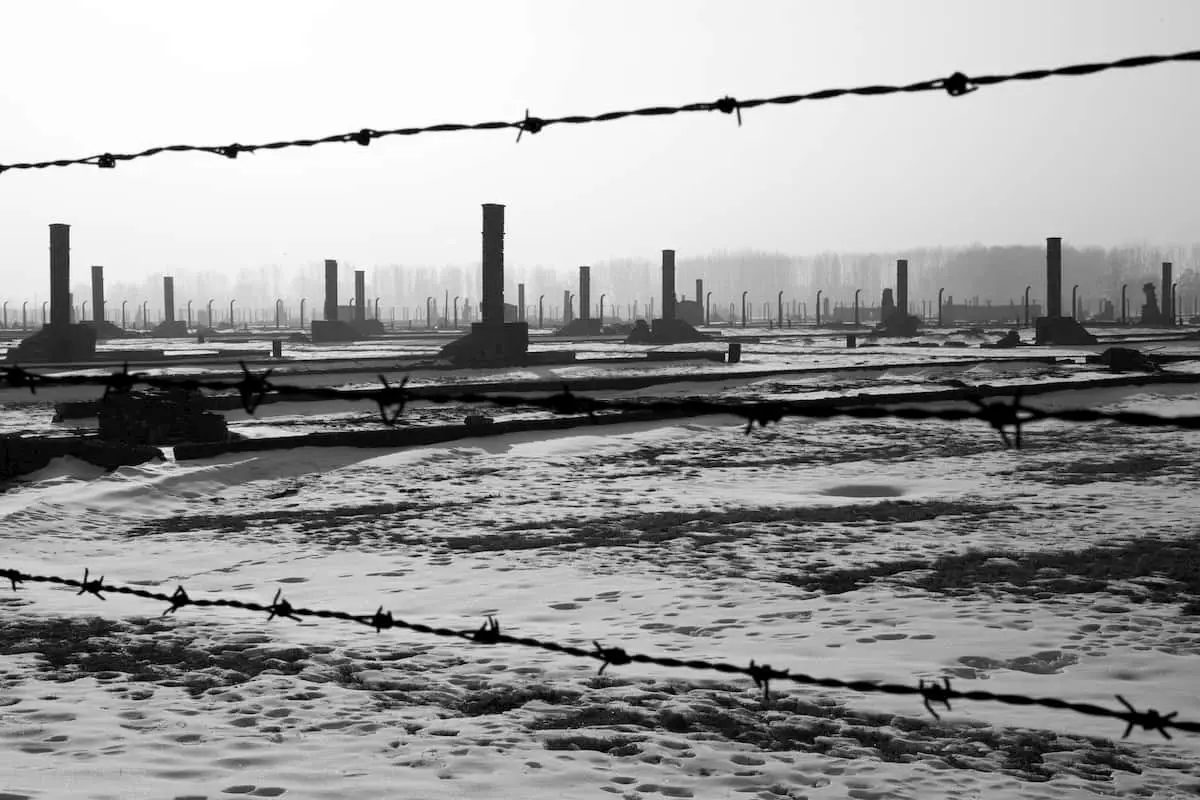The Marshall Plan was an economical aid from the US to help rebuild Europe after World War II. But was it aimed at Germany?

Courtesy of the U.S. Embassy, Den Haag
World War II
What was the Marshall Plan for?
After the second world war, most of Europe lay in ruins. Much of the industrial capacity was destroyed, and the factories that still stood up often had turned to produce material for the military. The infrastructure; streets, bridges, and railroads weren’t practicable in many places or simply didn’t exist anymore. In Germany, the destruction was bigger than elsewhere, for obvious reasons.
To all this came a desperate lack of men, especially in Germany. Calculating casualty is a difficult task, but some historians estimate that Germany lost 40 – 50% of its male population in deaths and prisoners of war. These men were in productive age, and the ones left behind, still living were mostly youngsters and elderly.

All this together made the post-war recovery slower and weaker in Germany than in other European countries. In the United Kingdom, the Netherlands, and France, by the end of 1947 production had already been restored to pre-war levels. Italy and Belgium reached pre-war levels by the end of 1948, while Germany had to wait until the end of 1949.
The Marshall Plan was an American initiative for foreign aid to Western Europe.
On the planning- and negotiation stage, it was supposed to be offered also to the Soviet Union, Poland, Tchekoslovakia, and other east-European countries, but after uncertainty about how much influence the US would gain over east-Europe by financially assisting them, the Soviets refused and convinced their allies to refuse as well. The Soviet Union then introduced the Molotov plan as compensation to help out their allies.
The United States transferred over $12 billion in economic recovery programs to Western European economies. The sum equals around $125 billion in today’s value. The aim was to promote economic recovery programs in Western European economies. It operated for four years beginning on April 3, 1948.
But who was George Marshall?
George Marshall was the Army Chief of Staff of the USA from 1939 to 1945. He was the main organizer of Operation Overlord; the embarking in Normandie and the counter-offensive of the allied forces against Germany. When Marshall returned to the U.S.after the war, President Truman appointed him Secretary of State. As such he became essential for the restoration of Europe, as the suffering countries depended much on aid from allies outside of Europe. And the only powerful ally that still had its economy and industrial capacity city in reasonable order, was the USA. George C. Marshall Jr. received the Nobel Peace Prize in 1953.
But, the money went mostly to Germany, right?
Actually, it didn’t. The beneficiaries were all of the west-European countries. Even Sweden and Switzerland, which had most of their industry intact, were aided.
Here’s a list of the countries and how much they got:

As you can see, the biggest payout went to the United Kingdom, then to France with Germany in third place. Obviously, Germany was in great need and the reasons for holding back on the country could be found in a general caution, especially from France and other European allies, in German industrial capacity and if it once again possibly could result in a military build-up.
The “level of industry” plan, signed by the Allies in 1946 put a cap on German steel production to 25% of pre-war production, on Car production to 10% of the pre-war levels, and all other heavy industry to 50% of pre-war capacity.
So did the Marchall plan work?
It’s not easy to say what would have happened if it hadn’t been implemented. One strong reason why the USA wanted to aid their European allies, was the influence of the, geographically close by, Soviet Union. The Marshall plan was something of a shield against the communist threat, and this could be one motive why the republican controlled Congress finally voted in favor. From this point of view, it definitely worked.

Europe as a whole had incredible growth in the 50s and the 60s. There are many reasons for this, and the Marshall plan could at least have been one contributing factor. It was a crucial help in a very dark period and without it, people in many countries would have had a much harder time at the beginning of the post-war era.
Did it help Germany?
Many think that the major motive behind the plan was to rebuild Germany specifically and make Germany the engine that could pull the whole continent towards the post-war industrial boom. The fact is, though, that Germany was strongly penalized for mainly two reasons,
- The Germans were responsible for the destruction of half the world, they had killed 6 million Jews as well as Roma, Homosexuals, Communists, POWs, and more or less anyone who had a different idea about the German Reign, than them.
- To the victors, Germany was a deadly threat. It had more or less single-handedly started and fought two world wars in a little more than 20 years, and it was of great importance that it would not happen again.
Germany got less aid per capita than other European countries. In addition, the Allies continued the exploitation of German production capacity and intellectual property during the years following the end of the war. The German exportation was in the hands of the allies, and they promoted a complete change in direction from heavy industry to light industry and agriculture. The occupying countries gained huge trading advantages by selling underpriced German merchandise to themselves.
In 1948, Germany replaced the Reichsmark with the Deutsche Mark. This reform halted rampant inflation. Together with tax reforms that same year, the German economy finally started to take off.
All remaining restrictions were only lifted when the Allied occupation of West Germany ended on May 5, 1955.
Conclusion
All this boils down to the Marshall plan as an important step to rebuild Europe. But it was not aimed at Germany. Instead, the Allied victory penalized Germany in many ways during the years immediately after the war, and the part of the Marshall plan that went to Germany was inferior to that of the other countries. The reasons for the economical boom of West Germany have to be found elsewhere.
No, the Marshall Plan was not aimed to rebuild Germany after World War II. But it was a big help for all the western European countries, and it was thought of as a shield against the Soviet Union. It sustained the world economy after one of the greatest military conflicts, the world has ever seen.

Courtesy of Ignaz Wald
sources